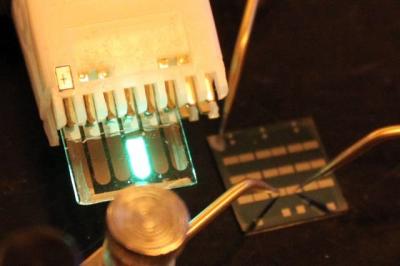UCLA develops new solution-processable, high-performance IGZO-ITZO backplane technology
Researchers from UCLA developed an amorphous oxide semiconductor thin-film transistors (backplane) for LCD and OLED displays. The transistors were produced using a solution process and feature a specially-designed layer with ultra-high density and high electron mobility.

The researchers say that their new process does not require a clean room or expensive equipment, and so can enable a high-performance device that is simple and cheap to produce. The new device offers an electron mobility that is 10 to 20 times greater than a-Si TFTs. It is composed of indium gallium zinc oxide (IGZO) and indium tin zinc oxide, (ITZO).






